Unveiling the Aromatic Majesty of Ceylon Cloves
Apr 22, 2024
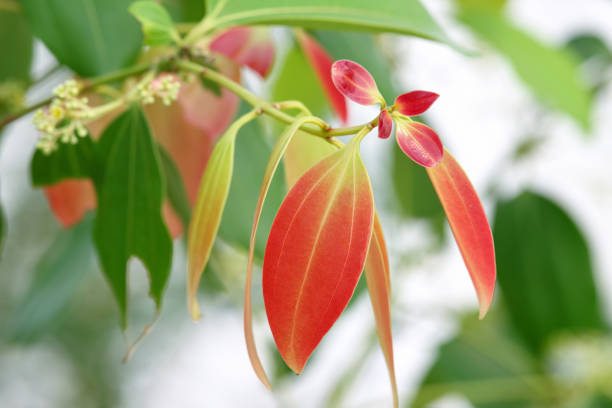
Cinnamon cultivation is mainly in the hands of smallholders, providing livelihoods for approximately 350,000 families in Sri Lanka. Cinnamomum zeylanicum's commercial output begins 3–4 years after field planting, and the plants have a 35–40-year economic lifetime. Proper plant care and training are critical to establishing a long-lasting and spreading plant foundation that generates continuous, robust, and straight branches.
Cinnamon is propagated by both seeds and cuttings.
Cinnamon propagation by seeds is the simplest and most extensively used way of producing planting material.
Let's have look at the cinnamon seeds.
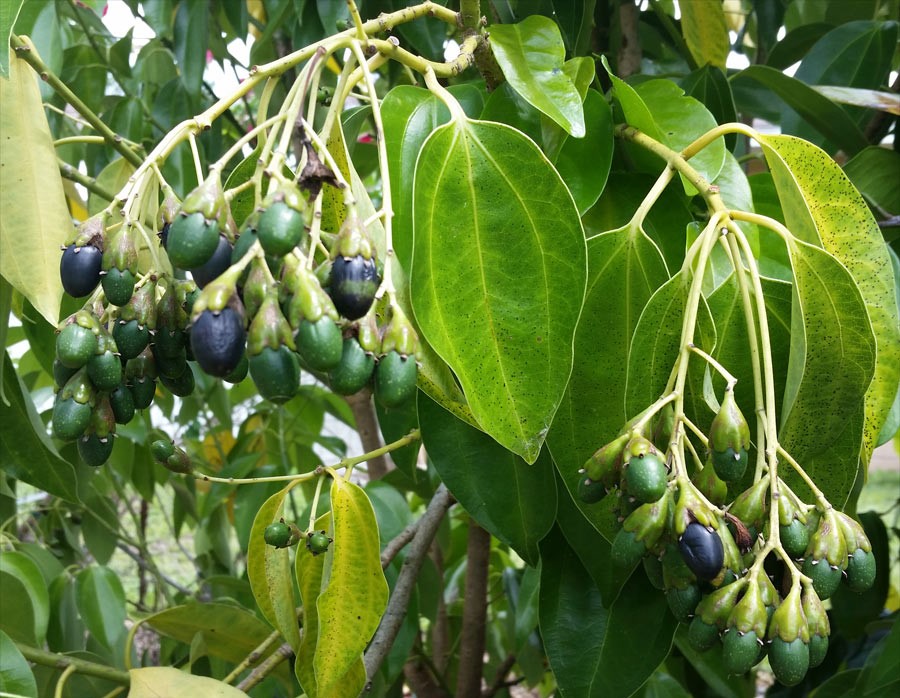
Cinnamon fruits are botanically called ‘drupes’ and cinnamon seeds are located inside the drupes. When the green immature drupes are ripen, the pericarp becomes blackish purple.
Cinnamon begins to bloom 30–36 months after seedlings are planted in the field when cultivated under ideal conditions. Pale white t yellow color Ceylon cinnamon flowers in Sri Lanka mostly from late December to the end of February, with sporadic flowering occurring at other periods. The fruits take around 4–5 months to completely ripen, therefore seeds are available from May to July. The fruits in a bunch do not ripen at the same time, picking has to be done daily for a few weeks for the harvest of ripe drupes, which is time-consuming and tedious; yet it is important so as to obtain seeds of high viability.
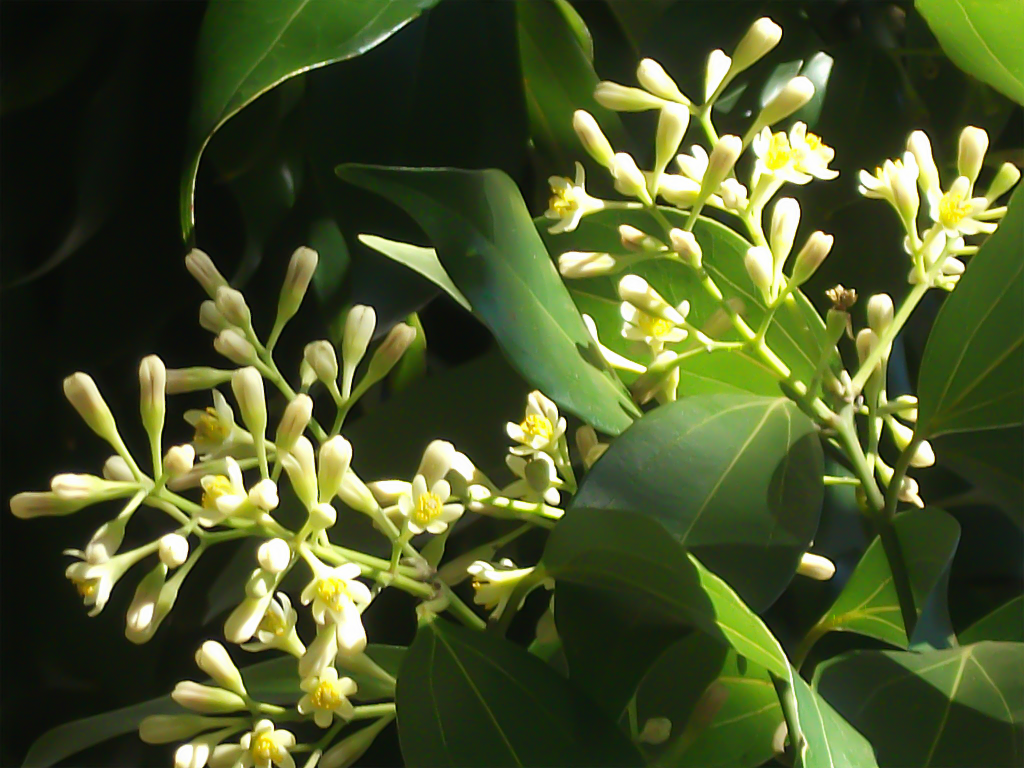
There is a special way to prepare the seeds to be planted to obtain new plants.
Only ripen fruits are harvested and as they do not ripen at the same time, picking has to be done daily for a few weeks for the harvest of ripe drupes, which is time-consuming and tedious; yet it is important so as to obtain seeds of high viability.
To extract seeds, they are stored in a heap for 1–2 days in the shade to soften the pericarp. After that, the pulp is removed and the seeds are retrieved by thoroughly washing them under running water. To obtain a high germination rate, it's best to sow seeds just after they've been washed.
Seeds cannot be kept for lengthy periods of time without losing viability due to their susceptibility to desiccation. Within 4 weeks, cinnamon seeds lose 40–60 % of their vitality, and by 6–8 weeks, they are completely dead.
Then it is the plant nursery stage!
Either direct seeding in polythene bags or planting on elevated seedbeds followed by transferring seedlings to polythene bags when seedlings reach a height of 10 cm. Given possible damage to seedlings when transferring from seedbed to polybags, resulting in uneven growth of seedlings, and labour-intensive nature of the operation, direct seeding in polythene bags is preferable.

8–10 seeds are directly planted in polythene bags (20 cm × 12.5 cm) filled with the potting mixture of equal parts top soil, river sand, coir dust, and dried cow dung. Usually, seeds germinate within 2–3 weeks. To produce planting material for 1 ha, 30–35 kg of seeds are required.
Nursery management is critical.
Temporary shade must be given during the first two months of the nursery period to prevent seedlings from sunburn. Burd netting is also practiced. Watering should be done on a regular basis. It is critical to control pests, diseases, and weeds in order to produce high-quality planting material. Under good management, seedlings are ready for field establishment within 6 months.
As described above, seasonality of seed production and rapid loss of seed viability combined with cross-pollination in cinnamon and limited seed availability poses a challenge to producing planting material from seeds. Therefore, growers produce planting material through vegetative means, such as cuttings, air-layering, grafting and micropropagation, producing ‘true-to-type’ plant populations.
Single nodal semi-hardwood cuttings is prominent in the large-scale propagation of cinnamon. Only upright shoots are picked to get this planting material since they give the trees more upright architecture. Growers manage mother plants in separate plots by proper training and pruning in order to stimulate the formation of more erect branches.
Wilting of obtained shoots has an impact on roots and plant vigor. To avoid desiccation, branches detached from mother plants and single nodal cuttings are placed in water and kept in the shade. For enhanced roots and a greater success rate, single nodal cuttings are taken from nodes with active buds and roughly one-third of the leaf blade removed.

A leaf-cutting may be about 3 cm long with about 2.5 cm below the bud and about 0.5 cm above the bud, with both lower and upper cuts made at a slant. Prepared single node cuttings are planted in polythene bags (20 cm × 12.5 cm) filled with potting mixture of equal parts top soil, river sand, coir dust, and dried cow dung. Soil should be well moistened, firmed and compacted prior to planting. 2–3 cuttings are planted per pot.
Then the pots are covered with sealed thick transparent polythene (500 gauge) to make a temporary propagator after being properly watered and sprayed with a copper-based fungicide. To avoid direct sunlight, propagators are placed in a shade net house with a 60–70 % shade level.
Propagators are first opened 4 weeks after planting, and thereafter at fortnightly intervals for after-care operations, such as watering, weeding and general management practices. By 10 weeks, plants are ready for hardening and can be planted in the field when 6–8 months old.
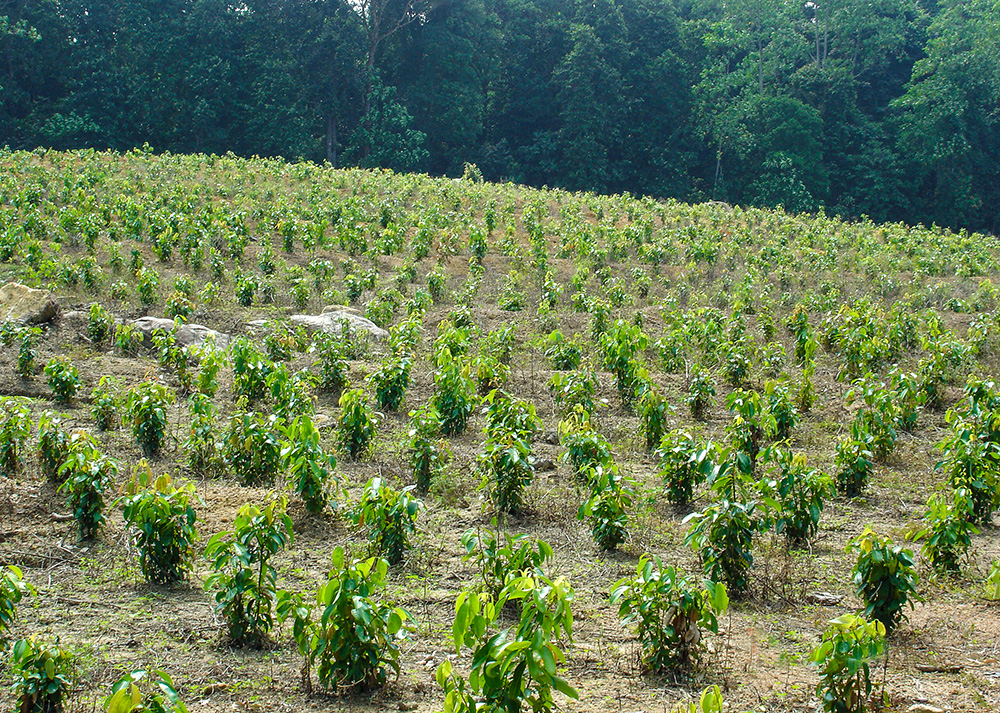
Cinnamon is mainly cultivated as a monocrop as it is being light demanding, its growth and yield is affected by shading.
Cinnamon is planted in straight lines on flat lands or on contours on sloping land in planting holes of 30 cm × 30 cm × 30 cm. Top soil is used to fill planting holes. It is recommended to incorporate 25 g of rock phosphate per planting hole to ensure development of a vigorous root system for early crop establishment.
Spacing recommended for cinnamon by the Department of Export Agriculture in Sri Lanka is 120 cm × 90 cm for flat lands and 120 cm × 60 cm for sloping lands and 6 plants per hole. It is good to establish rows as far as practicable in the east–west direction to intercept more light, reduce mutual shading and facilitate intercropping with suitable short-term crops during the early stages of establishment. When established at a spacing of 120 cm × 90 cm with six plants per planting hole, a hectare carries around 9000–9250 plants.
Plant death can occur for a variety of causes, and the consequent low plant density is a major contribution to low cinnamon production. In order to achieve optimal plant density, efficient land usage, and successful weed management, timely infilling becomes critical.
Vacancies should be replaced on a regular basis during the first 2 years following establishment, as this is difficult to achieve in mature stands. 3 months after planting, the initial gap filling may be done with regular seedlings in polybags. Later stages should employ 18-month-old seedlings cultivated in huge polybags (30 cm x 25 cm) with a height of around 45 cm. As a result, it's critical to raise specific planting material at the nursery for infilling.
Cinnamon is grown in Sri Lanka's wet and intermediate agro-climatic zones, where annual rainfall exceeds 1750 mm. Cinnamon may, however, be grown in the dry zone if irrigation facilities are provided.
Microclimatic conditions in a cinnamon cultivation can affect not only the yield and quality, but also the peelability of bark. Therefore, maintenance of favorable microclimate through windbreaks, mulch and green vegetal cover by eliminating only competitive weeds is important. If prolonged dry weather conditions exist during harvesting time, supplementary irrigation is important to facilitate peeling. Drip irrigation during dry spells is practiced.
To prevent suppression of crop growth, a circle with a radius of about 45 cm around the plant should be kept clear of competing weeds. The use of chemical weedicides is avoided as far as possible by cinnamon growers.
This is of paramount importance as importing countries have laid down stringent requirements in terms of food quality and safety, that is, maximum residue level (MRL) and some even ‘zero tolerance.
However, harvesting stems at maturity will open up space for weed growth; therefore, it is important to manage weeds after each harvest to facilitate regeneration growth.
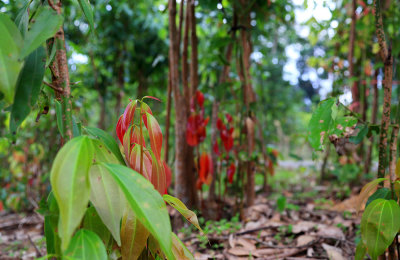
Cinnamon grows to a height of around 10 meters in its original setting. To reap economic benefits, it must be trained and pruned on a regular basis to keep it healthy with several stems at a convenient height of around 2.5–3.0 m.
When the plant is around 1.5–2 years old, the 'parasitic' side branches and leaves in the lower part of the bush should be removed. This will improve plant vigour, straight growth, and bark toughness, making peeling easier after harvest. When the stem's greenish bark grows, the amount of cinnamaldehyde, the most valuable chemical in bark oil, increases while the amount of eugenol drops.
Main matured stems (2–3) should be coppiced at a height of about 5–6 cm from the collar with the cut pointing inward at an angle of roughly 45° when plants reach the age of around 3 years. This will cause fresh shoots to develop from the outside, eliminating crowding.
It's vital to leave 2–3 strong stems for the next harvesting cycle, since this ensures the bush's aggressive development and speedy regeneration. Unhealthy and weak shoots are eliminated 3 months after harvest, leaving a maximum of 3 shoots per stem cut. To guarantee proper dispersion of assimilates and easy peeling, eliminate any sick or weak branches 3 months before harvest.
Source
Cinnamon Botany, Agronomy, Chemistry and Industrial Applications